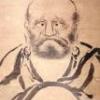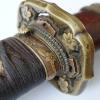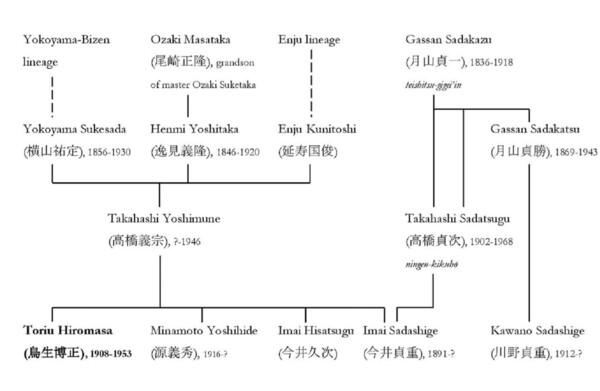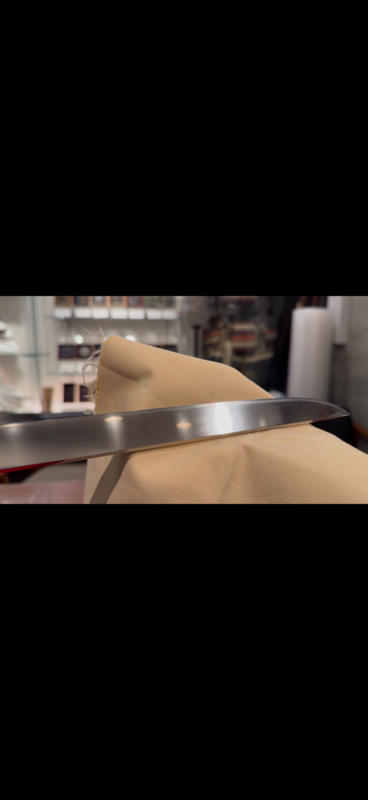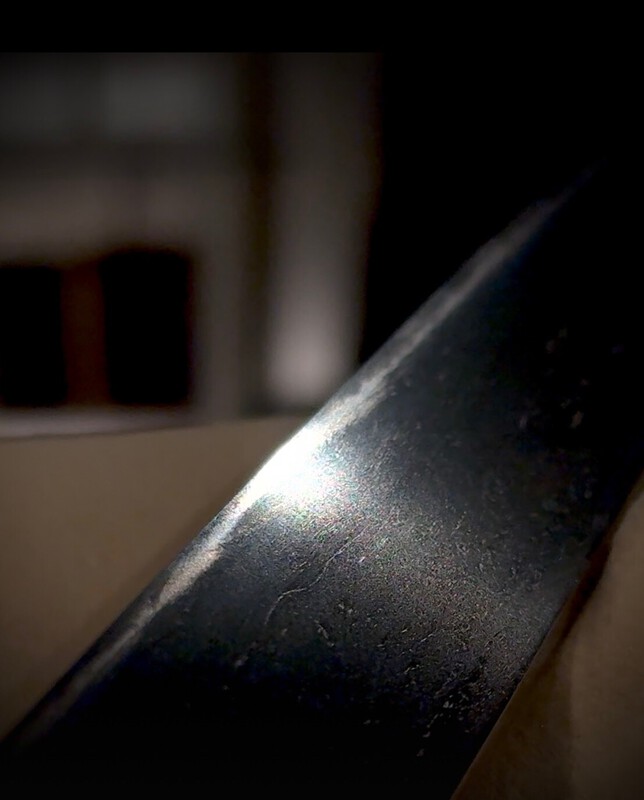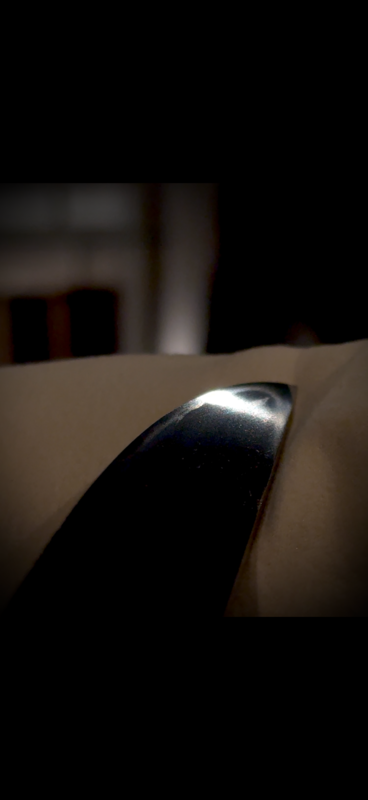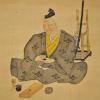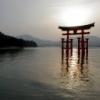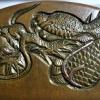All Activity
- Past hour
-
DENihontocollector started following Curran
-
Hi Lewis, Thank you for pointing this out – that’s really interesting to me. It’s reassuring to hear that the typical Norinaga style is suguha mixed with ko‑gunome, which seems to fit my blade very well. The Osafune‑influenced example you mentioned makes a great contrast and helps me better understand where my sword sits stylistically within Norinaga’s work.
-
Hi Mushin, Thank you very much for sharing your thoughts and for posting about your Norinaga tanto – congratulations on acquiring such a beautiful piece! I really enjoyed reading your impressions of it, and I think it’s a wonderful example in its own right. What you describe about your own experience is almost exactly the dilemma I’ve been facing with my katana: trying to determine whether it’s Shodai or Nidai. The more I read and hear from others (including your post), the clearer it becomes to me that this distinction may not be as important as I initially thought. Your point about focusing on the craftsmanship and enjoying the blade for what it is really resonates with me. It’s a great reminder not to get lost in the generational debate and instead appreciate the sword itself. Thanks again for sharing your perspective – it’s both calming and motivating as I continue studying my own piece. Best regards, Dennis
-
Really jealous to see this tanto! What a piece. My personal take, in regards to the school itself, I did not have the opportunity to study any, but books do list a few Shikkake smiths with known signed blades, most prominently Muromachi "Suke" smiths but also earlier examples like Norikuni[?]. Still if it is not Muromachi there is almost nothing which is not Norinaga and by default all pieces till Oei should be Norinaga. In regards to popularity of attributions, I feel that there are not too many other options for the classic style. With small gunome it can go Nio, and indeed there is some interplay between the schools. If gunome is wide and irregular I've seen alternative opinions going Mino. What else is there - Houju? It would have to be very aperiodic hamon and dark jigane. Similar direction for Uda. If its very prominent gunome, there are other options like Tomoshige, but then again its unlikely to be attributed as Shikkake in the first place. If its notare or pure suguha, then indeed other options are plentiful but also it is not a classic Shikkake and not very often attributed as such. Overall the school's attributions are dwarfed by those to Tegai, which is reasonable. In regards to generations, this could be like Nobukuni or Kaneuji a reasonable large family shop working under the same signature name, in case of Shikkake a clean cut separation between the first and second generation is more so a matter of convention.
-
This thread is also worth a look:
- Today
-
I wish I could Piers but mine all scampered off. Tigers, rats, South-sea Islanders, ONI (often pursued by Shoki) and the Toads all hopped away. ☹️ They left to keep all the ivory ones company - as demanded by the buyer☹️☹️ Many vacancies exist🙂
-
Hi Hoshi, Thanks a lot for your thoughtful reply – I really appreciate the perspective you’ve shared here. Your point about Occam’s razor and the fluidity between Norinaga generations makes a lot of sense, especially when looking at the overall corpus. I agree that, from both a study and market standpoint, focusing on the deki and how the blade sits within the broader Yamato tradition is more important than worrying about Shodai vs. Nidai. Still, it’s been really interesting to explore the historical context behind the name usage and signatures. Thanks again for taking the time – posts like yours really add depth to the discussion. Best, Dennis
-
@Bruce Pennington Hi Bruce, I've been trying to find more information about the RAF soldier. I can only find one G.J. Southard, but without access to his service records, I don't know if this is the right person. Regards, Ed
-
Hi Jussi, Thank you so much for taking the time to share your detailed observations and personal impressions – especially with the examples you’ve personally seen in Japan. It’s extremely valuable to get insights from someone who has studied these pieces in person rather than only through books or photos. I really appreciate the point you made about Norinaga essentially being the only recognized smith of the Shikkake school and how this impacts attributions. Your mention of the “bucket attribution” is something I’ve come across in discussions before, and it’s helpful to hear this confirmed by someone who has handled so many reference works. Regarding my own blade, I find it fascinating to compare it to the Jūyō Bunkazai and Tokubetsu Jūyō examples you referenced. Even though opinions on Norinaga’s aesthetics may vary, the rarity of works that combine Jūyō certification, strong Yamato traits, and complete koshirae with signed fittings is something I personally value highly. Your breakdown of the dated works (1319, 1338, 1340) and the broader context of the generations also helps frame my research into whether this piece aligns more closely with early Shodai output. Combined with the late Kamakura attribution by NBTHK, it’s a direction I’ll continue to explore. Thank you again for adding so much depth to this thread – posts like yours elevate the discussion enormously. Best regards, Dennis
-
That tsuka looks to me to be much more recent - probably 20th century, and possibly even industrial steel. Pass.
-
Wooden, or wood Netsuke. Many of my good wood netsuke took wing, but I still have a few left. If anyone wishes to post, please do so. In the meantime I'll fish some out and post photos, in order to keep the thread rolling.
-
Hi Markus, Thank you so much for taking the time to share this detailed insight – it really helps put the whole discussion into perspective. Your explanation about the Boston tantō and the signature conventions is fascinating, especially the point that traditional distinctions between Shodai and Nidai may need to be reconsidered. In the context of my blade, which is mumei but dated late Kamakura by NBTHK Jūyō papers, this information adds a lot of nuance. It seems that, regardless of whether we label it Shodai or Nidai, the workmanship clearly belongs to Norinaga’s high-level output within the Shikkake school – and that’s ultimately what matters most to me. I’ll definitely revisit the sources you mentioned and compare them with my own oshigata and setsumei. If you have any additional pointers on what characteristics to focus on when studying these works, I’d be very grateful. Many thanks again for your time and expertise – it’s incredibly valuable to have your perspective in this thread. Best regards, Dennis
-
Well, we all start somewhere. My first tsuba about 33 years ago was a bit of a paperweight of a Choshu tsuba. I've also crossed the Rubicon into 5 figure USD$ tsuba. Yet recently I ebay bought a double lot and am keeping the item of greater value. The other tsuba in the lot turned out to be a surprisingly nice early Edo tosho (or katchushi, depending on how you look at it). Worth is probably only $100-150, and my intent was to turn around and sell it ASAP. Instead, I've had it a for a while now and am still enjoying it for its simple, clean, solid design beauty. I suspect I will keep it another month or two. It isn't a lifer, like Dan's collection, but it holds its place nicely at the back of the bus with the fancy dancy ones up front. It will probably 'leave the bus' sooner than the long haul heavies, but it is a kinda happy accident to own it for a while. Nice little guest that stumbled in from crap photos on ebay. Every one in a while, something decent does come off ebay. For me, it is only about 1 a year, but I still check ebay sometimes.
-
Dennis, I agree with those telling you not to get caught up in obsessing over generational differences. I often need to heed my own advice, but, as Hoshi has pointed out, it’s pointless to stress about such things. With mumei blades it’s easy to worry about the strength of the attribution or the subtle differences with signed pieces. And with zaimei works you can easily get lost wondering about which generation forged it. Case in point: Pictures below are of a zaimei Shikkake Norinaga tanto I recently purchased. It has Hozon papers, which in and of itself doesn’t necessarily mean much, and it was listed as Kodai Norinaga. Tanobe’s sayagaki gives the time of manufacture from the end of the Nanbokucho to Oei. Once upon a time it might have been attributed to the work of the Nidai or the Sandai. Indeed, the dealer who originally listed the sword said it was the work of the Nidai. But as recent scholarship started questioning the generations’ work periods, Tanobe and the NBTHK started assigning blades to likely time of manufacture, rather than generations of smiths. This is especially true when it’s not a slam dunk for a particular generation. You see this in Nobukuni and Hasebe attributions as well these days. I bought this piece is for serval reasons, including: 1) I am tanto collector and zaimei Yamato tanto are not common, even Norinaga, which according to Jussi’s research, has 14 zaimei tanto (more than most Yamato smiths but still not many,) seven of which are Juyo from different era. 2) The sugata is lovely to my eye and the length at 29.2cm is sweet. 3) While there are some coarse areas on the ji from many polishes, the activity in the hamon is still wonderful and better than most Kodai blades I have seen, on a par with many of the Juyo examples. 4) It was relatively inexpensive with koshirae, always a nice extra. The key to all of this is that I liked the work. It’s better than most I have seen for sale over the years, and the price was right. And I got to study a new smith and school from a fascinating period of Japanese history. That is ultimately why most of us are in the hobby. The market does what the market does, and smiths fall in and out of favor. All that matters is that you like it. I think yours fits within the work of the Shodai, but even it is by another hand, it’s still lovely.
-
From the position of the dot, a soritsuno could have been removed and the dot is a patch in the lacquer.
-
I would like to quote from Tanobe Sensei's latest book on the Yamato tradition, where he elaborates a bit more on the Boston tantō that has bee mentioned: There was more than one generation Norinaga, and descendants of the first master continued to use this name until the Muromachi period. Period sword texts state that short signatures of the type “Yamato Norinaga saku” (大和則長作, “made by Norinaga from Yamato”) go back to the hand of the first generation, and such with longer signatures, containing the character Kunias in “Yamato no Kuni” (大和国, Yamato province) and prefixes like “Shikkake” and/or the honorary title Sakon no Jō (左近允) go back to the second generation, or possibly to later generations as well. The collection of the Museum of Fine Arts, Boston, contains a tantō (picture 1) that is depicted in the Kubikiri Asa’emon Tōken Oshigata (首斬り浅右衛門刀剣押形) and that is signed and dated: “Yamato Shikkake Norinaga yonjūhachi saku – Bunpō sannen tsuchinoto-hitsuji sangatsu tōka” (大和尻懸則長四十八作・文保三年己未三月十日) – “Made by Shikkake Norinaga from Yamato, age 48, on the tenth day of the third month Bunpō three (1319), year of the sheep.” In addition, there exists a tantō dated Ryakuō three (暦応, 1340), which is inscribed with the information that it was made when the smith was 69 years old. Accordingly, we can calculate Norinaga’s year of birth as Bun’ei nine (文永, 1272). When we follow the aforementioned period sources in terms of signature syntax, both tantō would be works of the second generation, meaning that the active period of the first generation obviously must be placed earlier than the two dates in question. When we examine the workmanship of a Jūyō-Bunkazai tachi signed “Yamato no Kuni Shikkake-jū Norinaga saku” (大和国尻懸住則長作, “Made by Norinaga resident of Shikkake in Yamato province”) (picture 2), and a tachi ranked Tokubetsu-Jūyō Tōken signed “Yamato Sakon no Jō Norinaga saku” (大和左近允則長作, “Made by Sakon no Jō Norinaga from Yamato”) (picture 3), and compare that to blades signed briefly “Yamato Norinaga saku,” the former do not date any later then the latter. In addition, the signature of both groups of works is fairly close, whereupon I tend to think that the period sources should be revised.
-
Pin Yin. This was a good thread to read through.
-
Well, not so bad IMO. Still thick 7,5 mm at Moto... Boshi very close to the Ha but maybe not runing out... Nakago has a feeling of late muromachie... and seki/mino is very possible. Must tosogu are decent, the same is a mess but can be fixed. No more than 400 USD for me to take the risk... Just an opinion. Best regards, Eric
-

WTB- Muromachi or earlier tachi. Scoped the market but can't settle.
Rawa replied to hinkitetsu's topic in Wanted to Buy
This tax is based on value of item not category so you probably think that it only aplies to houses and cars. Buying car/house is always done publicly as you need to register those as new owner. In my country purchases above ~230€ are taxed with 2% [deal done between 2 physical persons] -

Tango with Snake chasing a Frog
Bruce Pennington replied to Breezy's topic in Translation Assistance
Might be the sun. I half expected a crescent moon on the other side. I have seen both, as well as star configurations on habaki. Thanks for the added photos! -
Nice one, Ed! All brown Gunzoku tassel.





